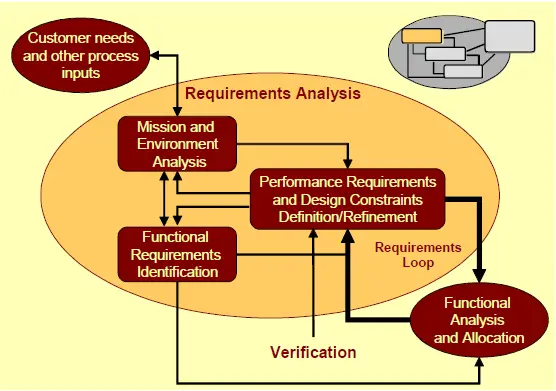Requirements Analysis (Step 1) is one of the first activities of the System Engineering Process and functions somewhat as an interface between the internal activities and the external sources providing inputs to the process. It examines, evaluates, and translates the external inputs into a set of functional and performance requirements that are the basis for the Functional Analysis and Allocation. It links with the Functional Analysis and Allocation to form the requirements loop of the System Engineering Process. The goal of requirements analysis is to determine the needs that make up a system to satisfy an overall need. [1]

The Missions and Environments Analysis firms the customer’s needs and states them in terms that can be used to establish system functions, performance requirements, and design constraints. The output of this activity initiates Functional Requirements Identification and the Performance/Design Requirements Definition and Refinement. As these activities progress, the original assumptions and conclusions are checked against evolving details. Usually, this results in some modification of the original thinking, and may even reflect back to the customer’s needs where certain ones may be impractical or excessively costly.
The output of the Requirements Analysis is a set of top-level functional definitions and accompanying performance and design requirements which become the starting point of the Functional Analysis and Allocation. The Requirements Loop serves to refine the requirements and initiate re-evaluation to determine how firm the requirements are for items that prove to be major cost, schedule, performance or risk drivers. Later in the overall process, detailed system characteristics are compared against the established requirements to verify that they are being met. At this point, there is usually little change to the requirements due to the verification feedback, but occasionally some minor changes are considered when the payoff is significant. [1]
Systems Engineering Process
- Step 1: Requirements Analysis
- Step 2: System Analysis and Control
- Step 3: Functional Analysis Allocation
- Step 4: Design Synthesis
AcqLinks and References:
- [1] SMC Systems Engineering Primer & Handbook – Page 58 – 59
- DAU Requirements Analysis
- Requirements Development Checklist
Updated: 7/22/2021
Rank: G13.2
